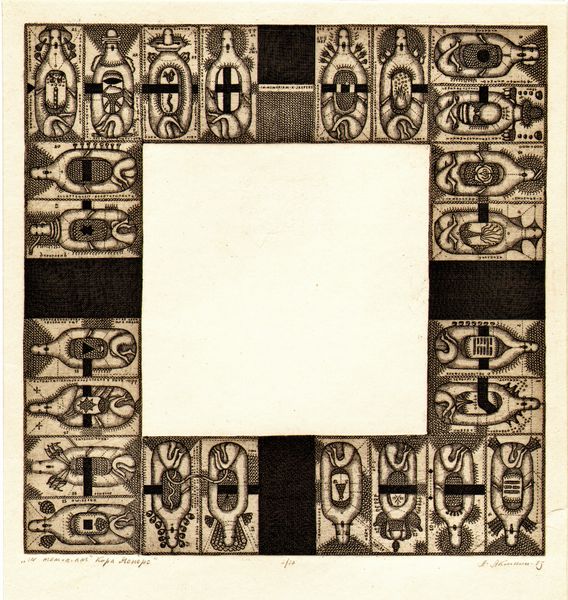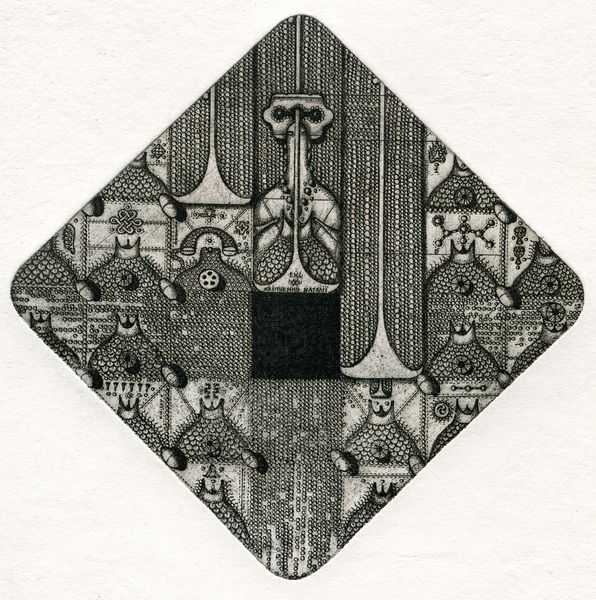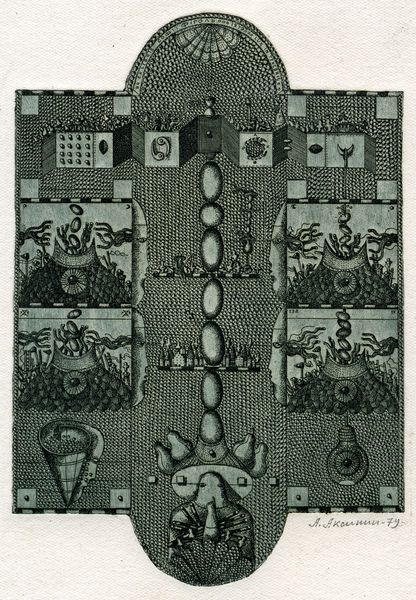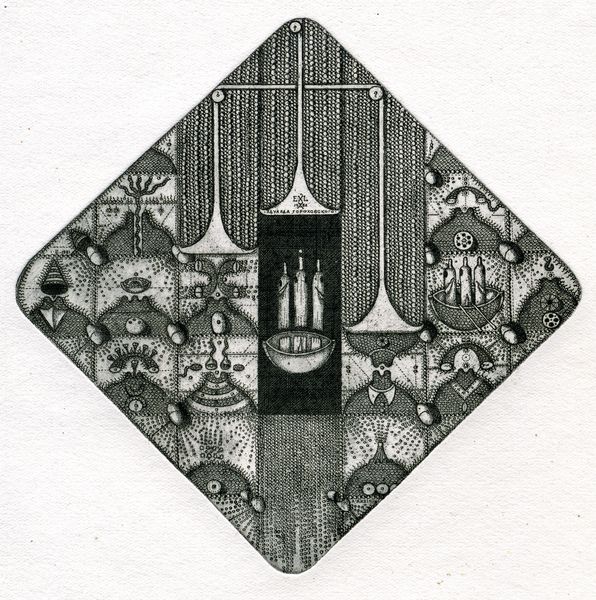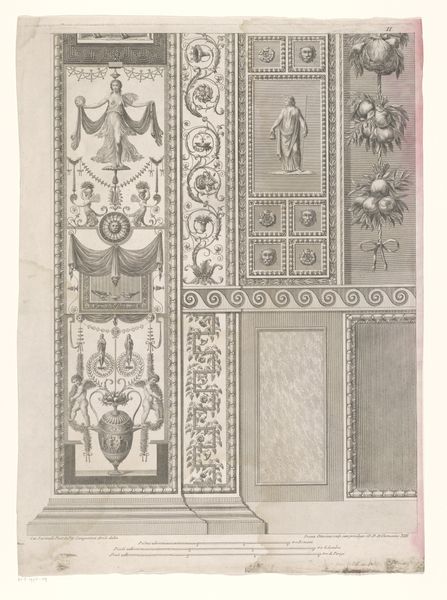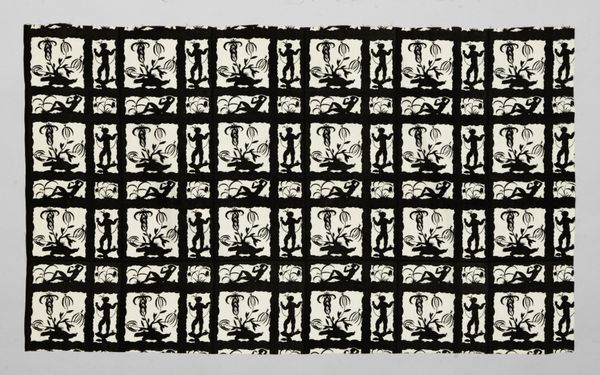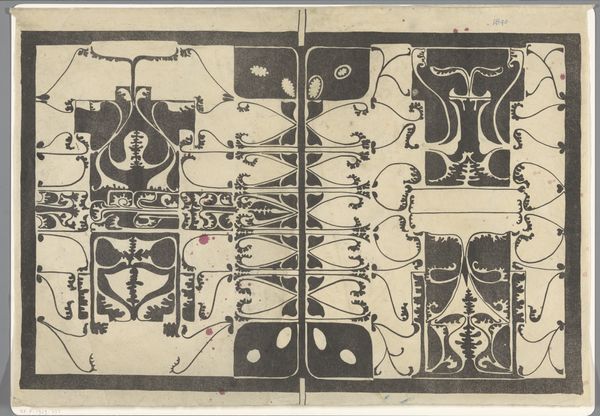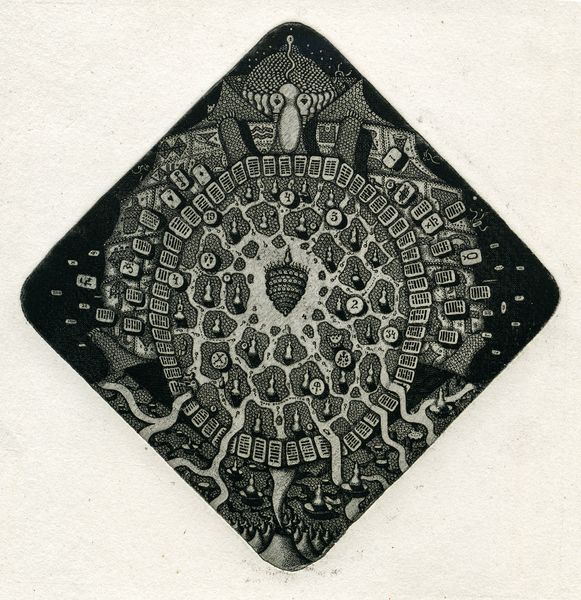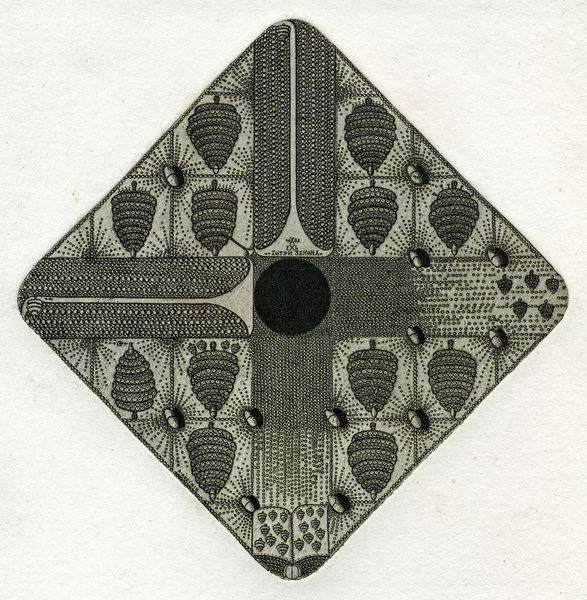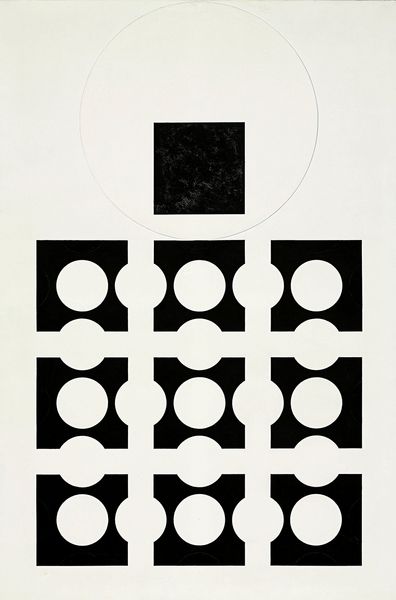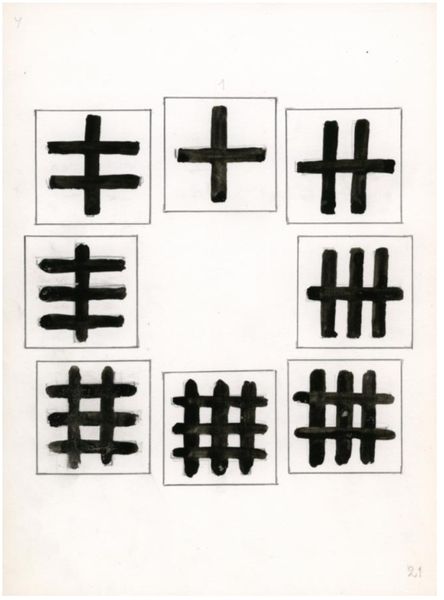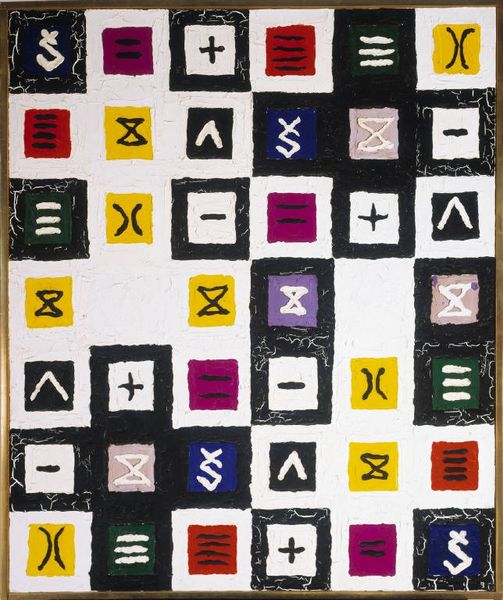
drawing, ink
#
drawing
#
pen drawing
#
ink
#
geometric
#
abstraction
Copyright: Oleksandr Aksinin,Fair Use
Editor: This curious piece is "Metaphysical Cube of Aksinin," a 1982 drawing by Oleksandr Aksinin rendered in ink. It has an almost devotional feel with the cross-shape, yet also feels like an exploded diagram of something... technological? What should we be paying attention to in this intricate work? Curator: The material execution itself, the meticulous rendering in ink, speaks volumes. Consider Aksinin's socio-political context: Ukraine under Soviet rule. The act of painstakingly creating this intricate drawing—the labor invested—becomes a subtle act of resistance, a personal assertion in the face of enforced conformity. The tools available to Aksinin at the time heavily influenced the type of mark making. It becomes a political statement through artistic action. Editor: So, you're saying the very process of creating something like this within that system has significance. How does the design – all those little pictures in boxes, affect the meaning? Curator: Exactly. And the imagery! Are these symbols of everyday life, meticulously catalogued? Religious icons, subtly subverted? The juxtaposition of the geometric grid with these ambiguous symbols prompts us to consider the artist's, and indeed the individual’s, attempt to find order and meaning within a system that seeks to define and control. How would accessible art materials shape similar efforts today, and what socioeconomic forces drive such creation? Editor: I see now. It’s not just *what* he drew, but *how* he made it, that carries so much meaning, a fascinating window into a particular time and place. Curator: Precisely. By focusing on the material and the means of production, we move beyond a simple interpretation of imagery and access a deeper understanding of the artwork’s cultural and political weight. The very limitations became the fuel for creation and quiet protest.
Comments
No comments
Be the first to comment and join the conversation on the ultimate creative platform.
